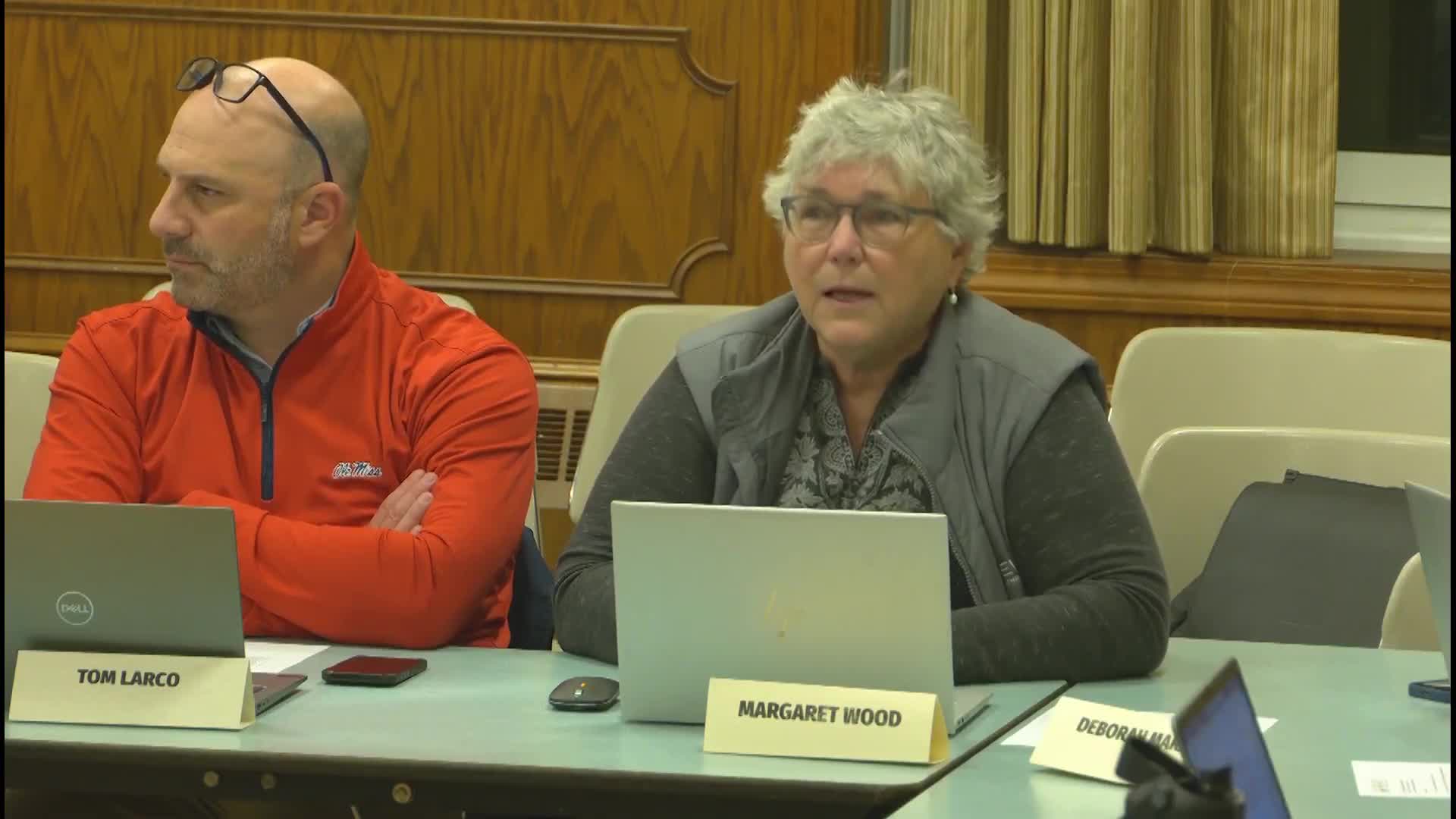Capacity study finds Salem High schematic can accommodate up to about 1,100 students; vocational spaces provide buffer
November 08, 2025 | Salem Public Schools, School Boards, Massachusetts
This article was created by AI summarizing key points discussed. AI makes mistakes, so for full details and context, please refer to the video of the full meeting. Please report any errors so we can fix them. Report an error »

The committee reviewed a capacity study on Nov. 6 that tested whether the schematic design supports projected enrollment up to about 1,100 students. The study — commissioned by the design team and presented by a design-team demographic analyst identified in the meeting as Brad — examined room counts, scheduling and various room-type capacities.
Brad summarized the baseline findings: "the enrollment would fit within the available seat capacity of classrooms, labs, and science labs... but at a pretty high utilization. You'd have over 90% of the seats full," he said, noting the MSBA typically aims for about an 85% utilization target. The baseline inventory included 49 general classrooms, labs and art rooms totaling 1,173 seats; at 1,100 students that calculates to roughly 93% utilization.
The analysis then added vocational-associated classrooms, which the presenter said add another 264 seats for a total of about 1,400 seats. "If you were to reach 1,100 students, you'd be at 75% utilization" when vocational seats are included, the presenter said. The study used the district's current schedule (Aspen data) and assumed a planning class size of 24 students per section; presenters described that assumption as conservative for worst-case capacity testing.
Committee members asked clarifying questions. One member asked whether vocational rooms were assumed available for general instruction; the presenter said they were not factored into general-education availability (they were an additional buffer). The presenter also noted the analysis tested a worst-case scenario in which no students were absent.
The committee discussed facility capacities tied to school programming: an auditorium capacity of about 640 seats was cited for full-auditorium events, and bleacher/field-house capacity was estimated by staff at roughly 1,200 (one participant described "600 and some on one side and 600 on the other" as a working figure to be verified). Members requested staff to confirm exact seating numbers.
The capacity study’s conclusion to the committee was that the schematic design, as drawn, can accommodate a likely enrollment near 1,100 students, and the vocational program rooms provide room for scheduling flexibility. Presenters suggested schedule adjustments and program-level scheduling levers could be used if enrollment grows beyond the tested scenarios.
Brad summarized the baseline findings: "the enrollment would fit within the available seat capacity of classrooms, labs, and science labs... but at a pretty high utilization. You'd have over 90% of the seats full," he said, noting the MSBA typically aims for about an 85% utilization target. The baseline inventory included 49 general classrooms, labs and art rooms totaling 1,173 seats; at 1,100 students that calculates to roughly 93% utilization.
The analysis then added vocational-associated classrooms, which the presenter said add another 264 seats for a total of about 1,400 seats. "If you were to reach 1,100 students, you'd be at 75% utilization" when vocational seats are included, the presenter said. The study used the district's current schedule (Aspen data) and assumed a planning class size of 24 students per section; presenters described that assumption as conservative for worst-case capacity testing.
Committee members asked clarifying questions. One member asked whether vocational rooms were assumed available for general instruction; the presenter said they were not factored into general-education availability (they were an additional buffer). The presenter also noted the analysis tested a worst-case scenario in which no students were absent.
The committee discussed facility capacities tied to school programming: an auditorium capacity of about 640 seats was cited for full-auditorium events, and bleacher/field-house capacity was estimated by staff at roughly 1,200 (one participant described "600 and some on one side and 600 on the other" as a working figure to be verified). Members requested staff to confirm exact seating numbers.
The capacity study’s conclusion to the committee was that the schematic design, as drawn, can accommodate a likely enrollment near 1,100 students, and the vocational program rooms provide room for scheduling flexibility. Presenters suggested schedule adjustments and program-level scheduling levers could be used if enrollment grows beyond the tested scenarios.
Don't Miss a Word: See the Full Meeting!
Go beyond summaries. Unlock every video, transcript, and key insight with a Founder Membership.
✓
Get instant access to full meeting videos
✓
Search and clip any phrase from complete transcripts
✓
Receive AI-powered summaries & custom alerts
✓
Enjoy lifetime, unrestricted access to government data
30-day money-back guarantee

